러 Mi-24 Hind

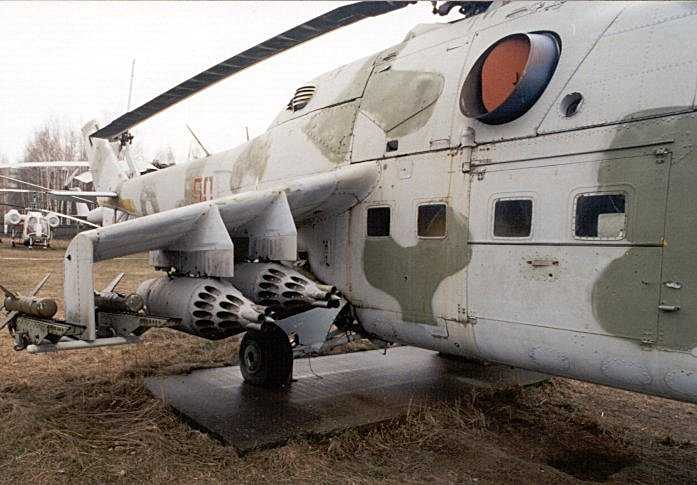
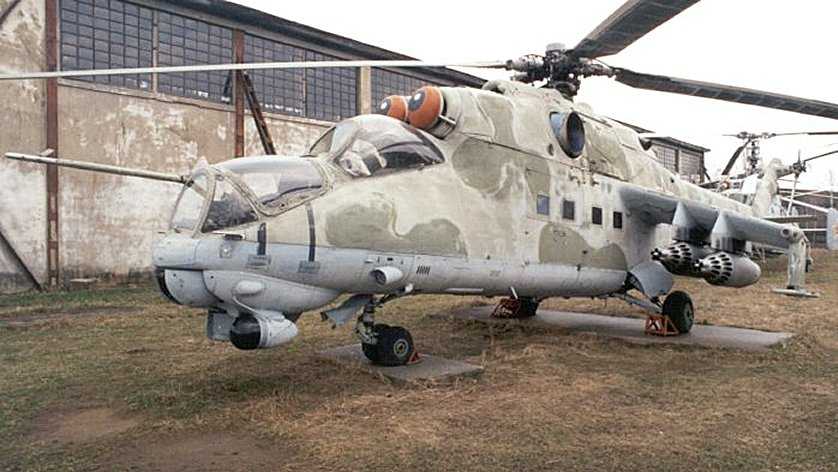

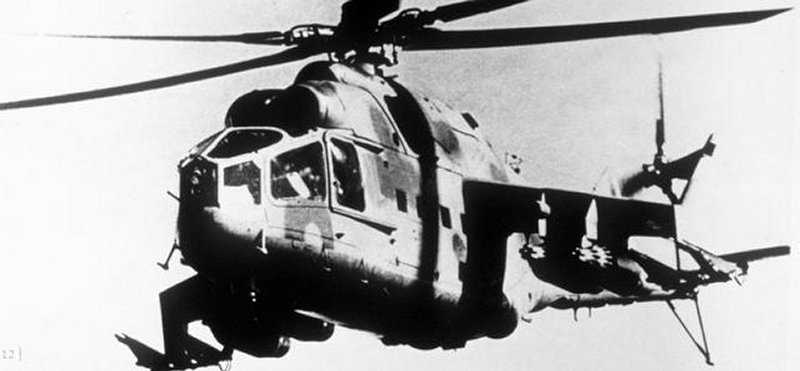
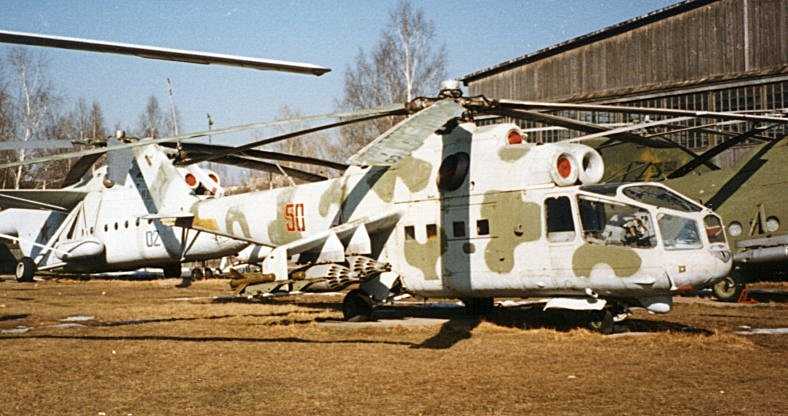
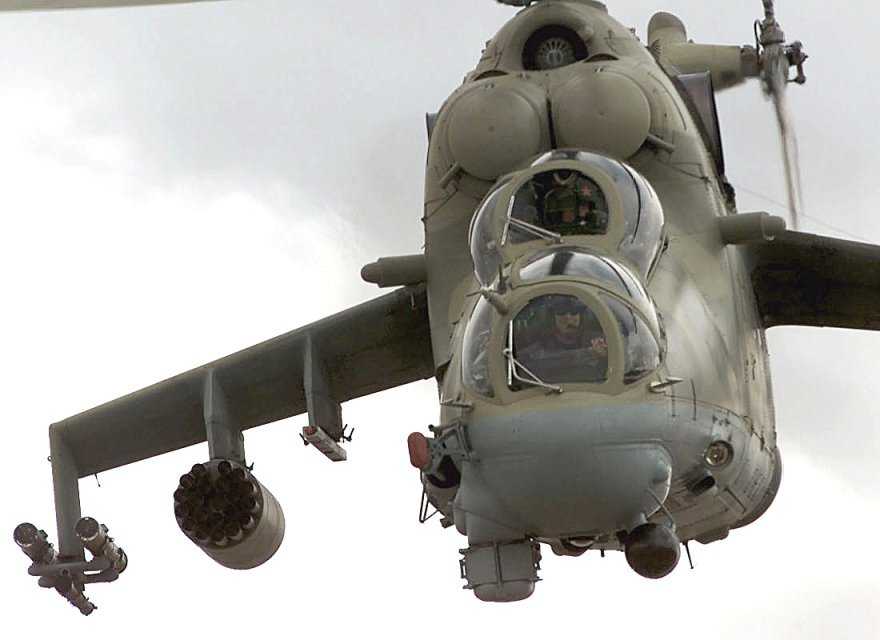
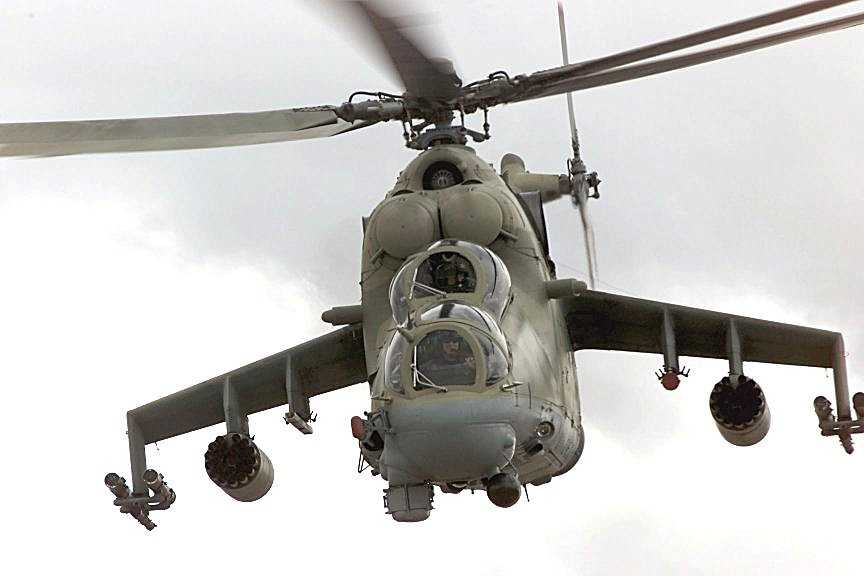
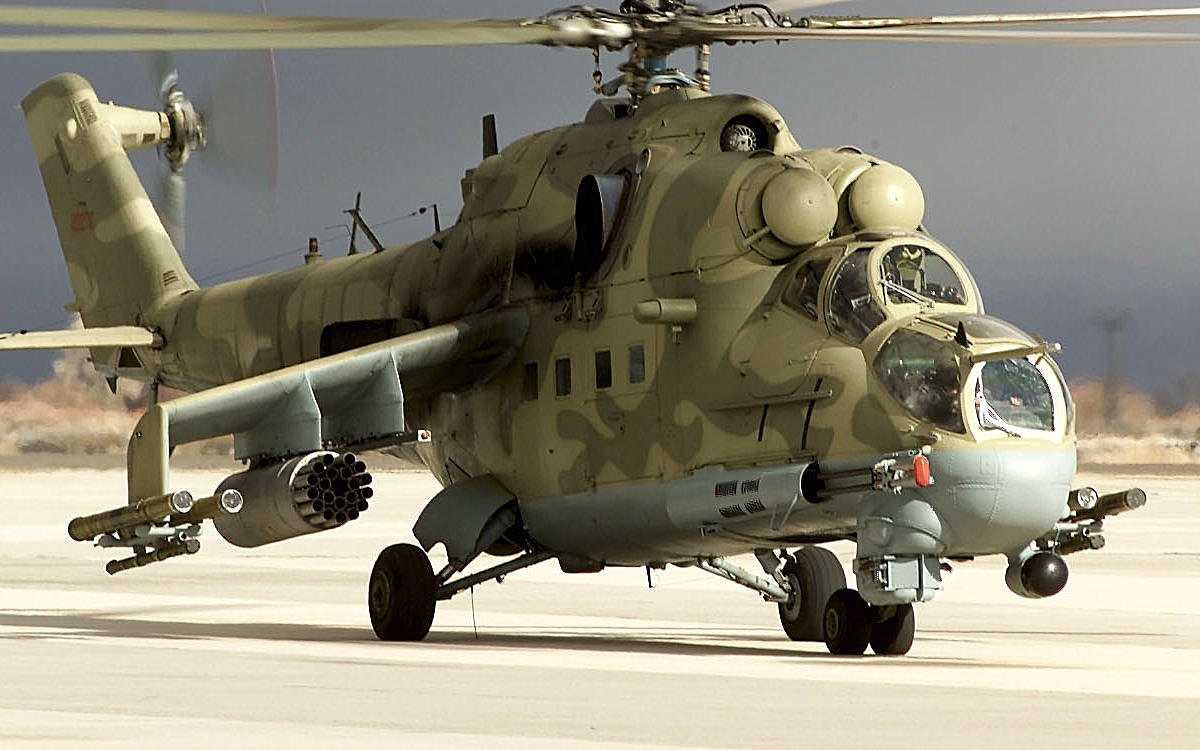
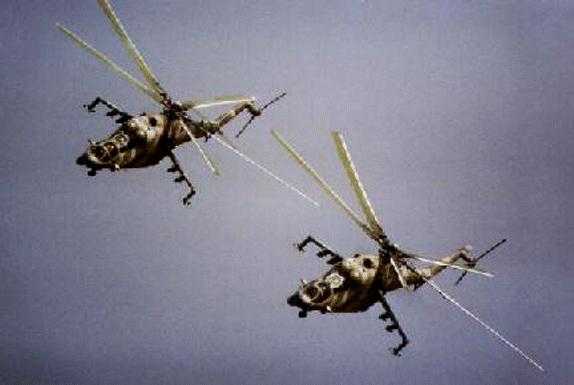
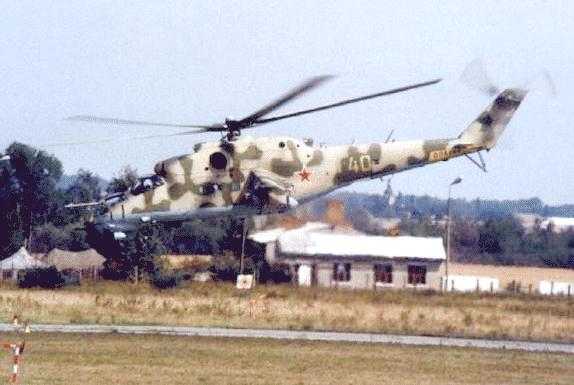

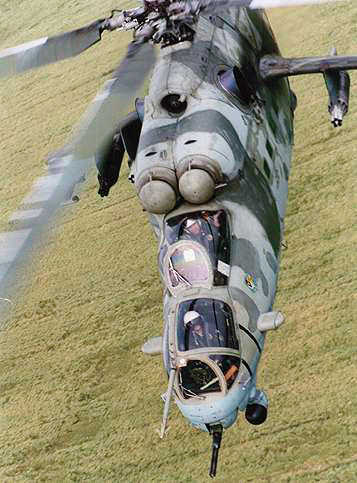

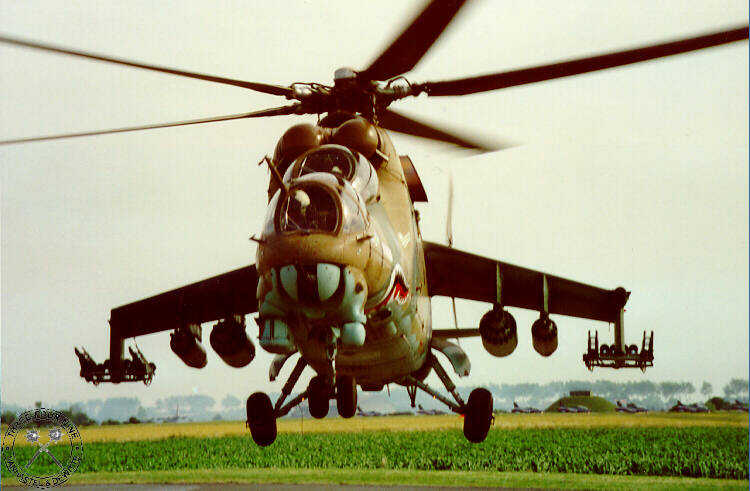
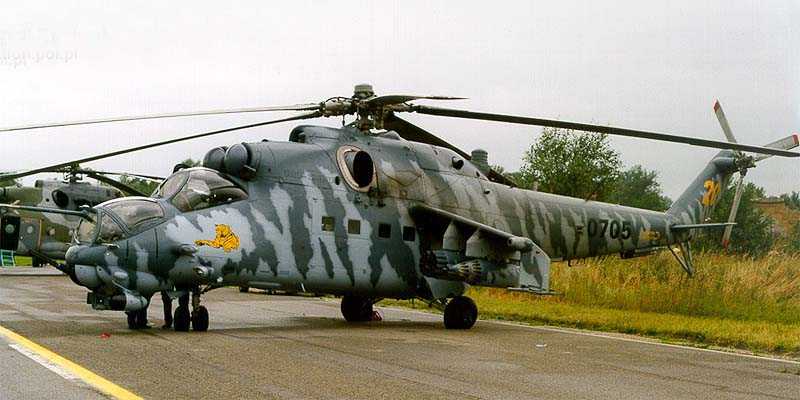
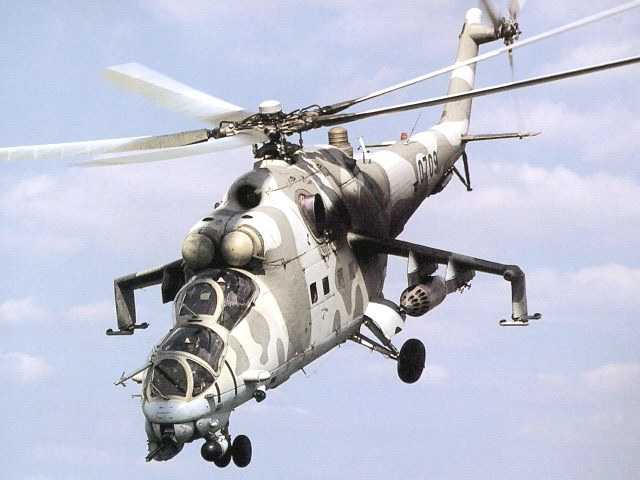
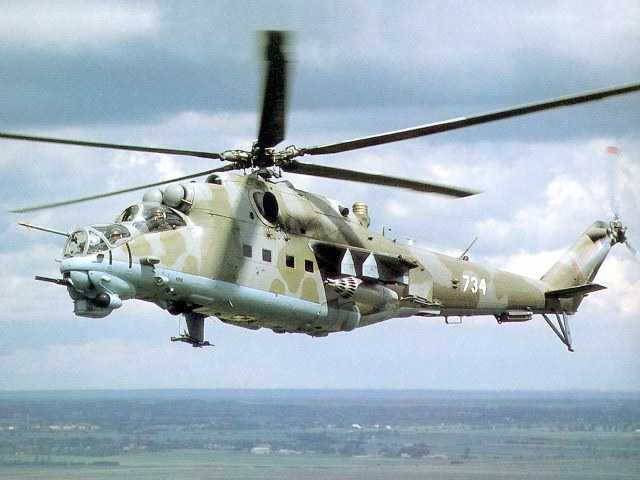
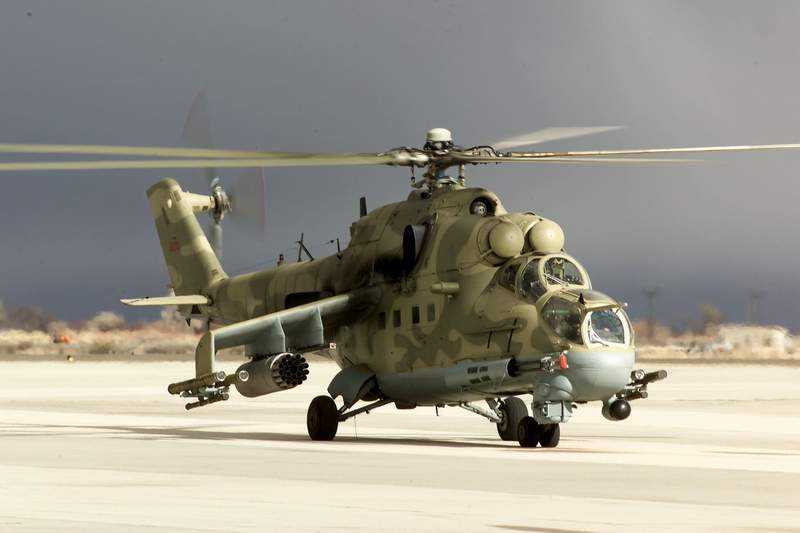
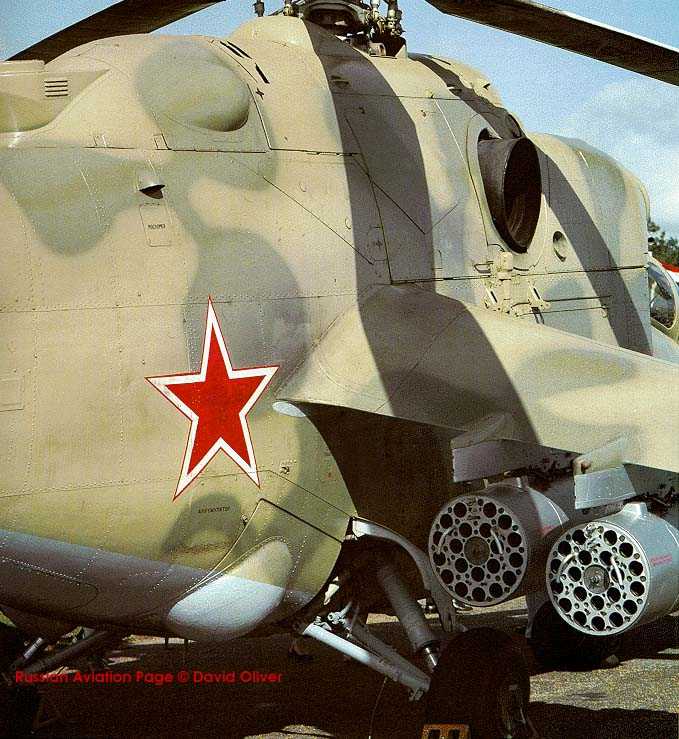
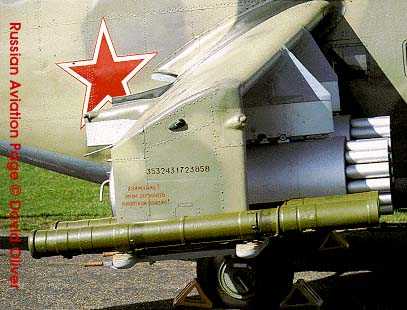
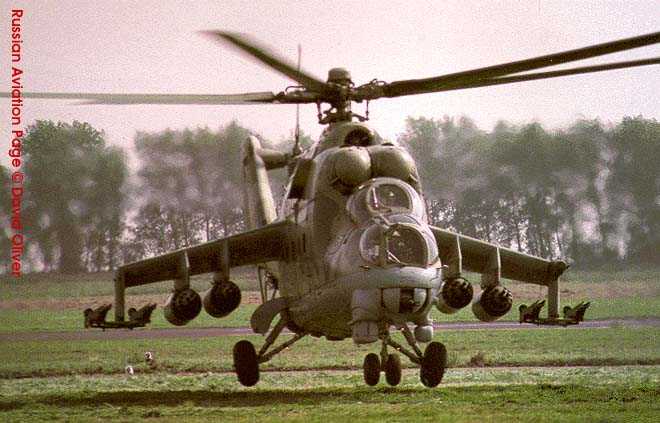
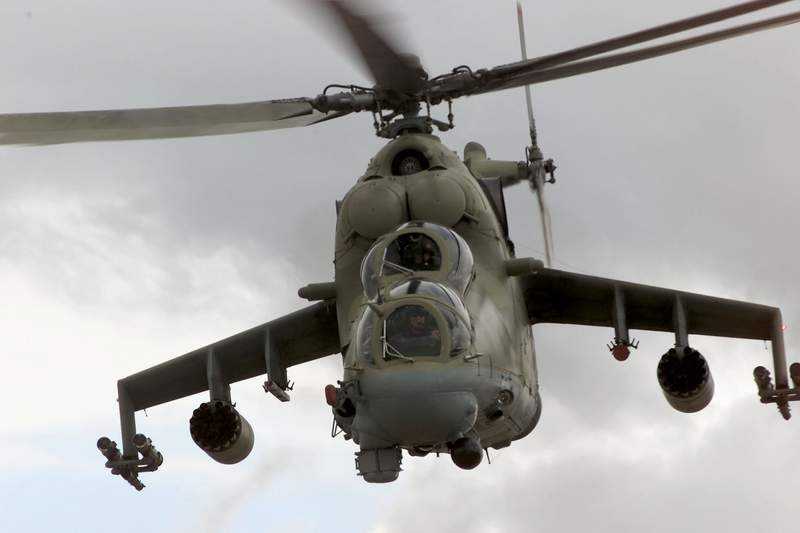
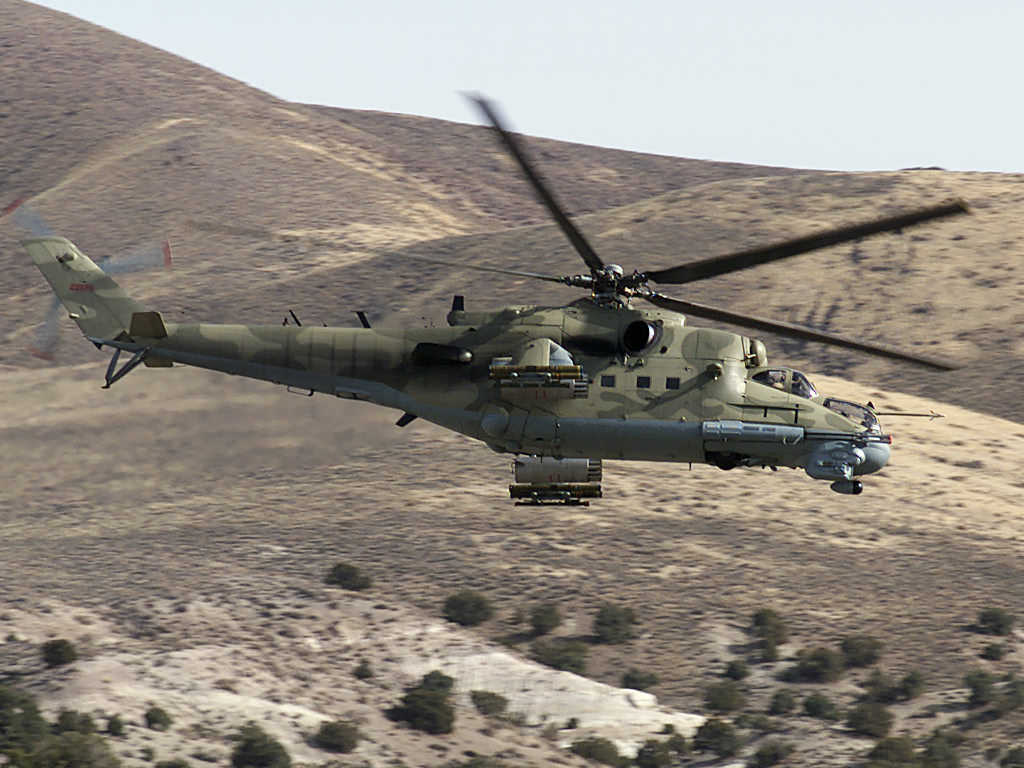
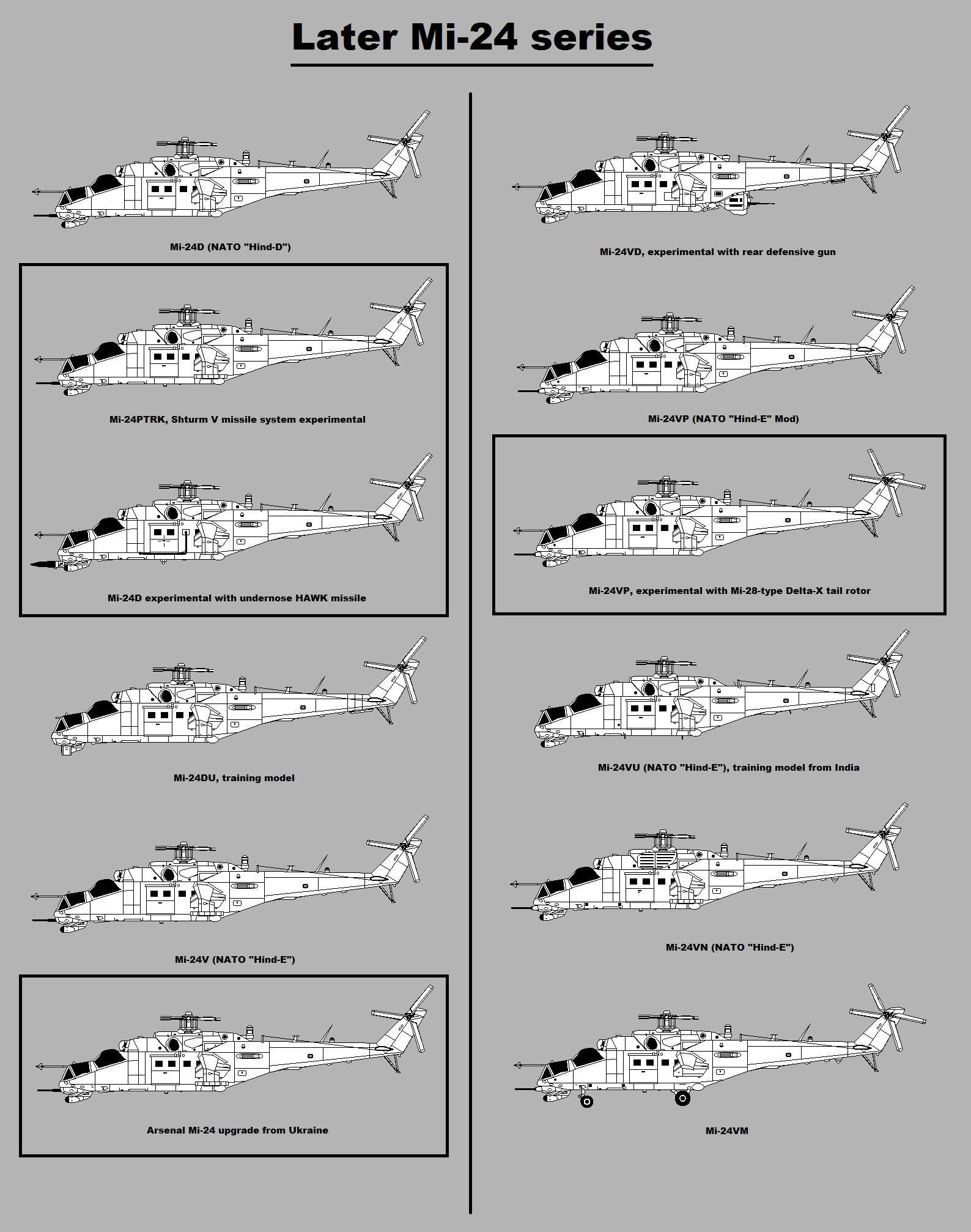
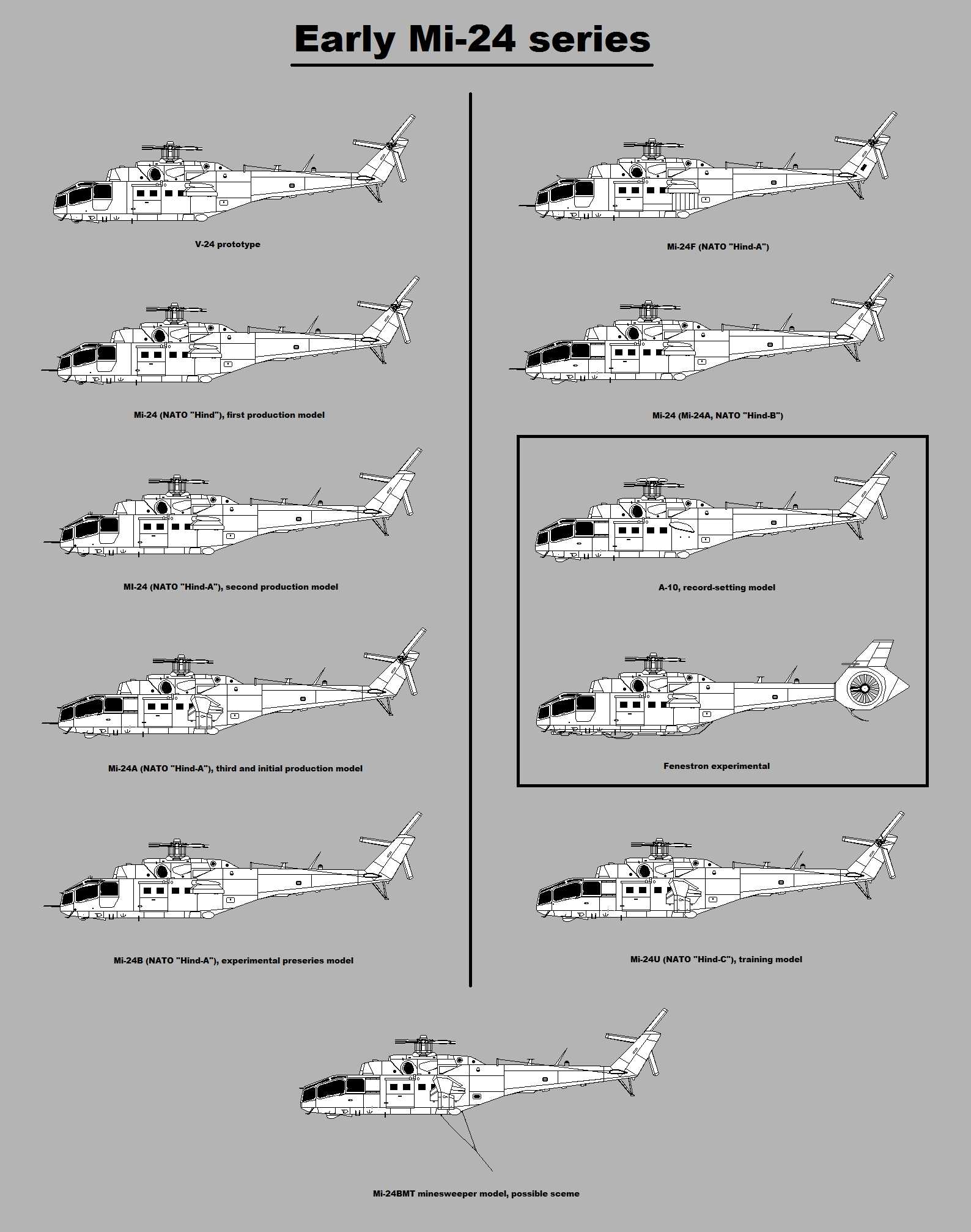

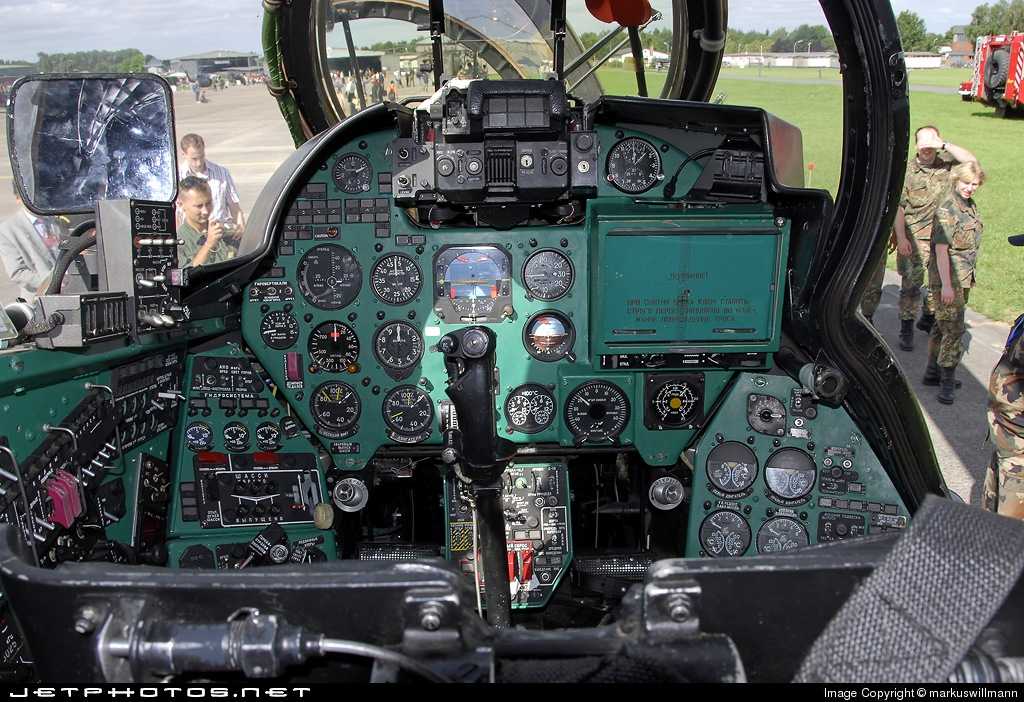
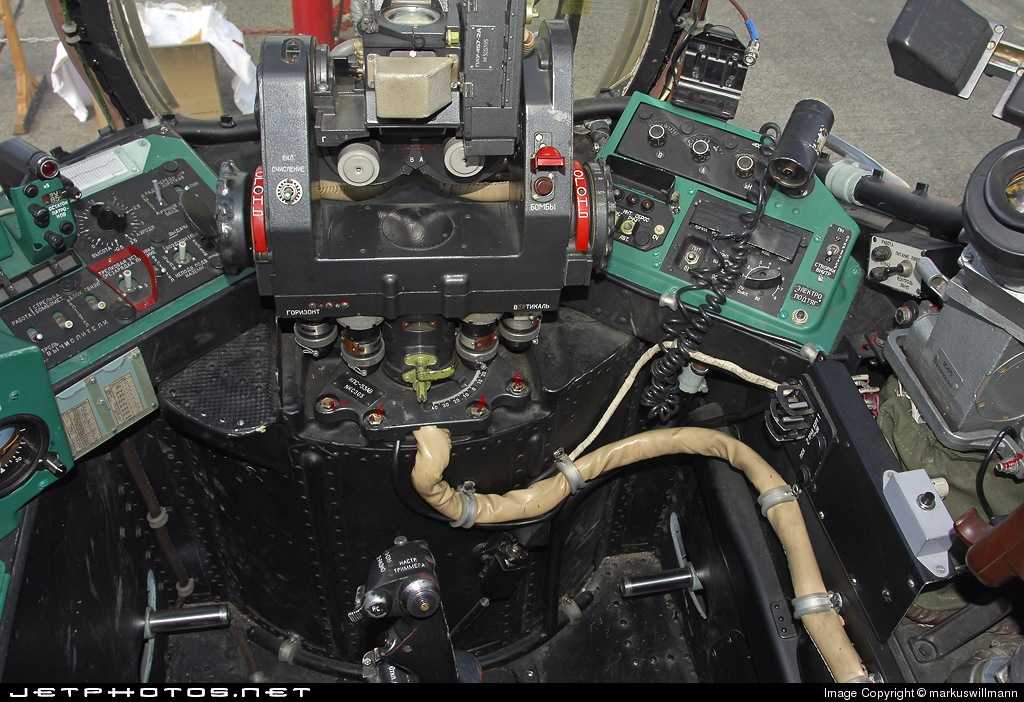
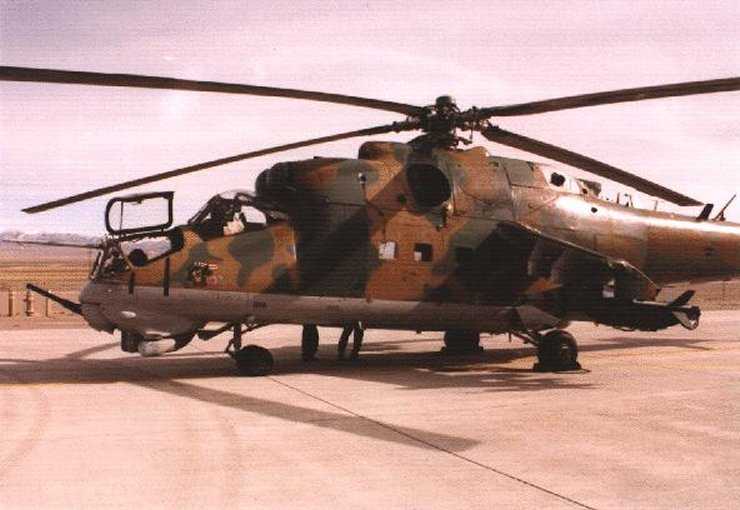
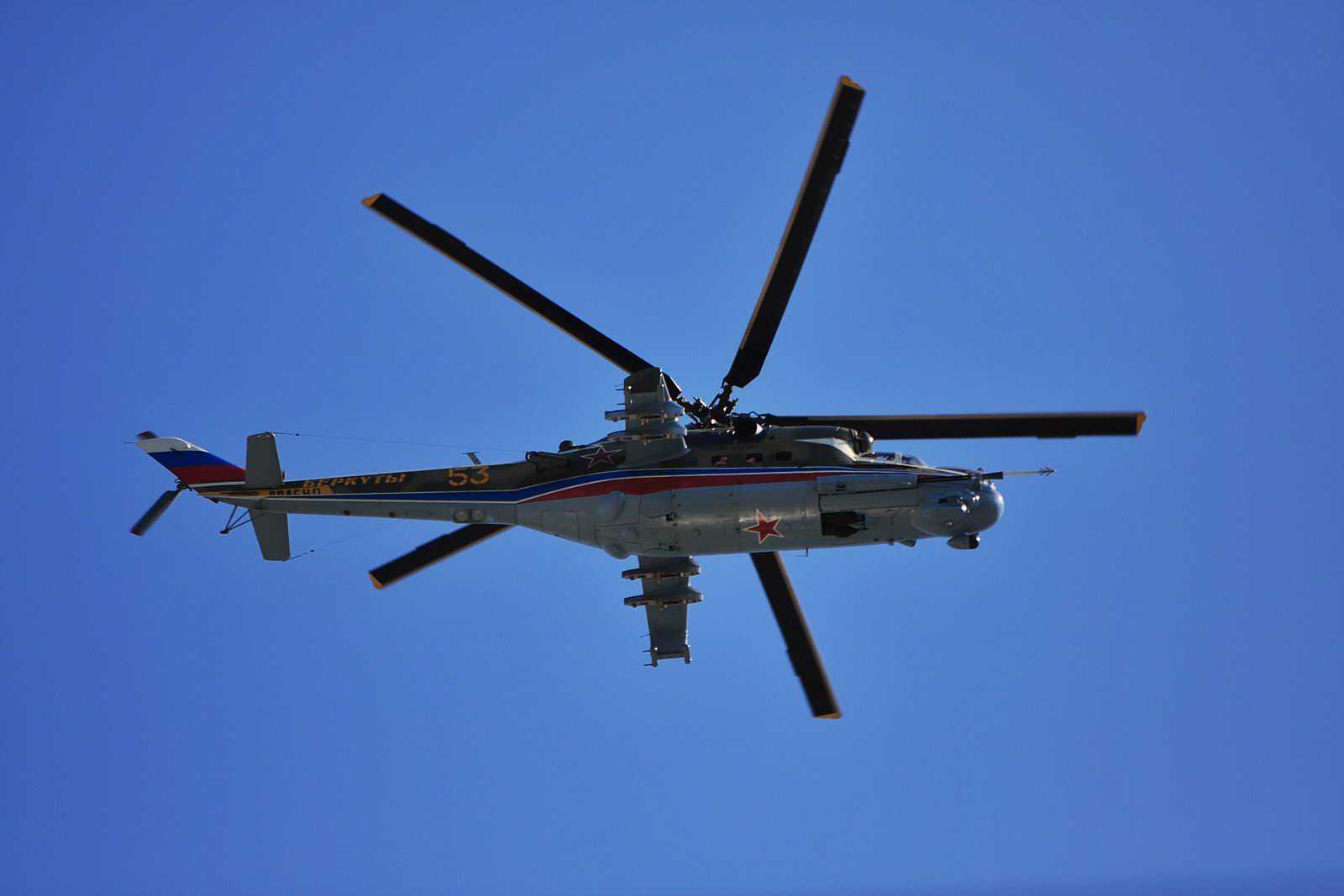
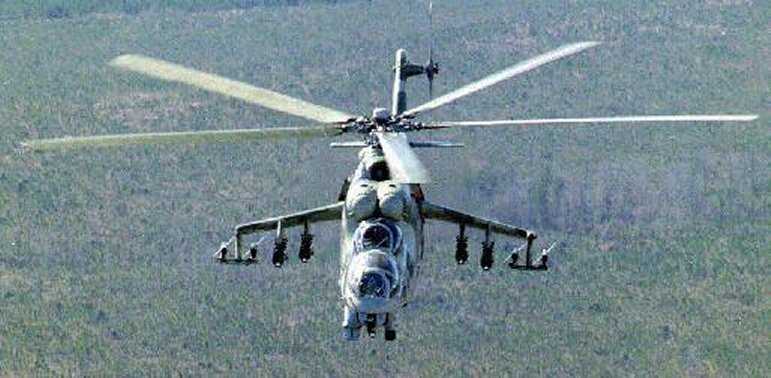
Mi-24 Hind 무장헬기<?xml:namespace prefix = o ns = "urn:schemas-microsoft-com:office:office" />
NATO 암호명 Hind, 러시아식 암호명 Крокодил(크로커다일) 공격헬기는 1973년도 봄 동독 주둔 소련군에 배치되어 그 모습을 드러냅니다.
초기 구소련은 보병에게 빠른 기동력과 화력을 동시에 제공해줄 물건을 지속적으로 요구했고 베트남전 당시 미 육군은 UH-1 헬기로 착륙지에 대한 지상 적군의 소탕을 위해 무장을 탑재한 무장헬기, UH-1C를 제작하였습니다. 소련은 미군의 이러한 동향을 파악하고 수송헬기 뿐만 아니라 공격헬기도 필요성을 절감, 미국의 AH-1 전문 공격헬기보다 UH-1C 처럼 무장 수송헬기로 개발하여 등장한 헬기가 Mi-24입니다. 덕분에 MiI-24는 공격헬기로서는 특이하게도 병력 10여명을 탑승시킬 수 있으며 동시에 중무장을 염두에 두고 개발했기 때문에 엔진도 고출력을 장착합니다. 소련조종사들 사이의 별명은 летающий танк(날아다니는 전차)였습니다.
러시아 대표적 공격헬기 Mil Mi-24 계보와 파생형 정리
Mil Mi-24 Hind
구소련이 개발한 Mi-24는 1973년 봄에 동독에 주둔한 구 소련군에 배치되기 시작하여 NATO로 부터 Hind라는 코드를 부여 받았다. 이 헬기는 병력 수송 능력과 공격 능력을 동시에 보유하는 특이한 능력을 가지고 있으며 처음부터 두가지 기능을 같이 사용하여 수송 병력에 대한 지원 능력을 가진 헬기이다.
구 소련은 미국이 전용의 공격헬기를 개발항 것과는 달리 수송 능력과 공격능력을 동시에 보유한 Mi-24를 개발하였다. 현재 Mi-24는 대전차 공격능력을 가지고 있지만 처음에는 수송 병력에 대한 지원을 목적으로 무장을 하였으며 뒤에 대전차 미사일을 탑재하여 공격력이 강화된다. 대전차 공격임무에 사용할 때는 보병이 탑승하지 않기 때문에 기동성이 향상되며 처음부터 중무장을 예상하여 대형 엔진을 채용했기에 여유 출력을 많이 가지고 있다. 동체 양쪽에는 하반각을 가진 스터브 윙에 무장을 탑재한다.
A~C형의 조종실은 유레가 없는 3인승으로 전방에 사수, 바로 뒤의 병렬좌석에 조종사와 비조종사가 탑승하고, D형의 조종실은 완전히 재설계되어 전방에 사수, 뒤에 조종사가 탑승하는 방식이 되어 서방측과 동일해진다. 기수 아래에는 12.7mm 4총신의 개틀링 포를 탑재하고, 좌우에는 각종 센서를 내장한 포드를 적재한다. A~E형까지 기체와 무장은 기본적으로 동일하나 뒤에 AT-2 대전차 미사일을 탑재하여 대전차 능력을 갖게되며, E형부터는 신형인 스파이럴로 교체되고 기수아래 좌측의 센서도 대형화 된다. 또한 레이져 거리측정기, 유도장치, 전차장비 등을 신형으로 교체하여 본격적인 야간 전투 능력을 갖추게 된다. 최신형인 E개량형은 23mm 기관포를 동체 우측에 상하로 고정 장비하여 대 헬기 공중전을 염두에 두고 개발된 것으로 추측된다. Mi-24는 대량으로 생산되어 구소련이 대량으로 장비한것을 비롯하여 동구권, 아랍, 아프리카 등에 대량으로 공급 되었다.
Mi-24 동체는 금속제 모노코크 구조이고, 조종실 아래, 연료 탱크가 있는 동체 아래, 엔진 주변등 중요장치에는 티타늄 장갑판이 설치되어 있다. 기체는 전체적으로 7.62mm탄, 핵심부분은 12.7~14.5mm탄을 방어할 수 있다.엔진은 두 개의 엔진을 가까이 배치하여 피탄시 동시에 두 개가 정지할 가능성이 있다. Mi-24 A~C형은 조종실 유리가 평면으로 구성되어 있어 태양광 반사에 대한 피탐지성이 높고 시계에 많은 제한을 가해 D형 이후에는 2인승이 된다. 이 헬기는 비교적 넓은 동체폭을 사용하여 내부에 완전 무장한 8명의 보병을 수용할 수 있고, 경무장의 보병은 최대 16명까지 수송할 수 있다. 랜딩기어는 3점식이고, 고속 비행시 공기저항을 줄이도록 설계되었다. A~C형은 완전 인입식으로 겉에는 커버가 있었지만 D형부터는 동체 착륙에 대비하여 바퀴의 절반이 노출되도록 개량되었다.
엔진은 Mi-8에도 사용된 인토프 TV2-117A(1,700hp)의 출력강화형 TV-117(2,200hp) 2개를 병렬로 탑재한다. 메인로터의 5개의 블레이드는 금속과 복합소재로 구성되어 있다. 유압계통은 고장과 피탄을 대비하여 2중으로 되어있고, 랜딩기어, 수평미익, 로터 등의 구동 계통을 조종한다.
Mi-24 A~C형은 기수 아래의 터렛에 고유무장으로 12.7mm 기관총을 1개 장비하여 착륙전에 지강제압용으로 사용하였다. 탄약을 250발정도 적재하며 이동하는 차량공격에는 명중률이 떨어져 거의 효과가 없었다. D~E형은 구경이 동일하지만 4총신 개틀링포로 교체되었다. 발사속도, 초속, 명중률이 향상 되었고 좌우의 조준장치에 레이더, 저광량TV(LLLTV)을 내장하고 기관포와 연동되어 명중률이 향상되었다. 신형 기관총은 조준기가 개량되고, 안정장치가 도입되어 지상공격은 물론 공대공 전투에서도 효과적으로 운용할 수 있다. 내측 파일런 내지는 익단에는 레이저 거리 측정기를 탑재하여 기관총, 로켓탄, 대전차 미사일의 명중률을 높이고 있다. 기수에 있는 저속용 대기속도 센서는 로켓 발사시 탄착점을 계산하는데 사용한다.
주익 아래의 2개의 파일런에는 UB-32 57mm 로켓탄포드를 장착하고, 익단 파일런에는 AT-2내지는 AT-6를 탑재한다. AT-2는 적외선방식의 반자동 유도방식이고, 신형인 AT-6는 무선지령 유도 방식이다.
이 외에도 160mm S-16, 210mm S-24 로켓탄, 125~250kg 폭탄, 23mm 기관포 포드등을 탑재한다. 로켓탄은 지역제압임무에 최대의 효과를 발휘하나 명중률이 떨어져 점표적같은 것을 공격하기 어렵다. 로켓의 탄두는 유탄, 대인용 파편탄, 철갑탄, 채프(전자전용) 등을 임무에 따라 적재하여 사용한다. 로켓탄은 여러 탄종을 혼용하여 탑재할 수 있고, 최대 128발을 적재한다. 또한 AS-7 지대지 미사일 운용능력을 보유하고 있다고 하나 정확한 정보는 아직까지 없다.
공대공 전투용으로는 AA-2/AA-2-2 아돌 공대공 미사일을 탑재할 수 있다고 알려졌으나 최근에는 SA-3 휴대용 지대공 미사일을 탑재하는 것으로 알려지고 있다. 그리고 SA-7을 탑재하고 비행하는 것이 목격되기도 하였다. SA-7 미사일은 미국의 레드아이에 필적하는 성능을 가지고 있으며 튜브발사식으로 적외선 호밍 방식이다. 이 미사일의 유효 사정거리는 3.5km이고, 약간의 개조를 통하여 신형 휴대용 대공미사일을 탑재할 수 있다. 그리고 E형에는 공대공 전투용으로 기수 우측에 23mm 기관포를 2기 탑재한다.
항법장치는 전파고도계(RV-5), 비콘수신기(MRP-56P), 라디오컴퍼스(ARK-15), ATC/SIF (SOD-57N), 자이로 컴퍼스(GIK-1), 단거리 항법장치(RSBN-2S)등을 장착한다. 이외에도 적아식별장치(IFF SRO-2M), ILS(계기착륙장치 SP-50), VHF/UHF 통신기를 탑재한다.
Mi-24 공격헬기는 아직도 대량으로 운용되고 있고 하인드 D의 수출형을 Mi-25, E형의 수출형을 Mi-35라고 부르기도 한다. 하인드 시리즈는 현재 서방측이 개발중이거나 배치한 신형 공격헬기에 비하여 공격력은 떨어지지만 뛰어난 지상제압과 대전차 공격능력으로 아직도 유용하게 사용할 수 있다.
(글출처: http://www.aplaco.com/APLACO/heli/mi-24/mi-24.html)
Mi-24 초기형 계보
The Mi-24 went from drawing board in 1968 to first test-flights in less than eighteen months. The first models were delivered to the armed forces for eval uation in 1971. The Hind-A did have a number of problems: lateral roll, weapon sighting problems, and limited field of view for the pilot. A heavy redesign of the aircraft front section solved most of these problems.
V-24 ? The first version, twelve prototypes and development aircraft. The first V-24 mockup resembled the Bell UH-1A Huey. Later models resembled the future Hind-A, one of which was modified in 1975 as A-10 for speed record attempts with wings removed and faired over and with inertia-type dampers on the main rotor head. The A-10 reached a speed of 368 km/h.
Mi-24 (Hind-A) ? Other early versions were the armed assault helicopter, which could carry eight combat troops and three crew members. It could also carry four 57-mm rocket pods on four underwing pylons, four MCLOS 9M17 Phalanga (AT-2 Swatter) anti-tank missiles on two underwing rails, free-fall bombs, plus one 12.7-mm machine-gun in the nose. The Mi-24 was the first production model.
Mi-24B (Hind-A) ? Experimental series of Hind-A, one of which was used to test the Fenestron tail rotor.
Mi-24F (Hind-A) ? Modified Hind-A with seven reinforcing ribs on the port fuselage aft of the wing and the SRO-2M Khrom ("Odd Rods") IFF antenna relocated from the canopy to the oil cooler. The APU exhaust was also extended and angled downwards. The designation may be unofficial.
Mi-24A (Hind-B) ? The Mi-24A was the second production model. Both the Mi-24 and Mi-24A entered Soviet Air Force service in 1972. Lacks the four-barrel Yak-B 12.7mm machine gun under the nose.
Mi-24U (Hind-C) ? Training version without nose gun and wingtip stations.
Mi-24BMT - Small number of Mi-24s converted into minesweepers.
Mi-24D (Hind-D) ? The Mi-24D was a purer gunship than the earlier variants. It entered production in 1973. The Mi-24D has a redesigned forward fuselage, with two separate cockpits for the pilot and gunner. It is armed with a single 12.7-mm four-barrel Yak-B machine-gun under the nose. It can carry four 57-mm rocket pods, four SACLOS 9M17 Phalanga anti-tank missiles (a significant enhancement compared to the MCLOS system found on the Mi-24A), plus bombs and other weapons. One Mi-24D was sold to Poland in January 1996 and was used by the WTD 61 in Manching during 1994 for tests with the head of a Hawk missile in place of the chin-mounted gun. This version also had an unidentified modification in the rear cabin window on the starboard side.
Mi-24PTRK ? This version was the Mi-24D modification that was used for testing the Shturm V missile system for the Mi-24V.
Mi-24DU ? Small numbers of Mi-24Ds were built as training helicopters with doubled controls.
Mi-24V (Hind-E) ? Later development led to the Mi-24V which entered production in 1976 and was first seen by the west in the early 1980s. It armed with the more advanced 9M114 Shturm (AT-6 Spiral). Eight of those missile are mounted on four outer wing pylons. It was the most widely produced version with more than 1500 made. In Polish service this aircraft is designated Mi-24W. One Mi-24V was referred to as Mi-24T for unknown reasons.
Arsenal Mi-24V upgrade ? Ukrainian upgrade for Mi-24V
Mi-24P (Hind-F) ? The gunship version, which replaced the 12.7-mm machine-gun with a fixed side-mounted 30-mm GSh-30K twin-barrel cannon.
Mi-24P-2 ? Upgraded Mi-24P.
Mi-24G (Hind-F) ? Custom Mi-24P with a gun on the starboard side
Mi-24TECh-24 "Mobile Repair Shop" ? Experimental Hind-F to test abilities for recovery of downed aircraft.
Mi-24 후기형 계보
Mi-24VP (Hind-E Mod) ? Development of Mi-24V made in 1985 which replaced the machine-gun with twin 23-mm cannons in a movable turret. Entered service in 1989, but onl y 25 were made before production ended the same year.[1] One Mi-24VP flew with the Delta-H tail rotor of the Mi-28.
Mi-24VU (Hind-E) ? Indian training version of Mi-24V "Hind-E".
Mi-24VD ? This version was produced in 1985 to test a rear defensive gun.
Mi-24RKhR (Hind-G1) ? NBC reconnaissance model, which is designed to collect radiation, biological and chemical samples. It was first seen during the 1986 Chernobyl nuclear disaster. Also known as the Mi-24R, Mi-24RK and Mi-24RKh (Rch).
Mi-24RA (Hind-G1 Mod) ? New version of the Mi-24V.
Mi-24RR ? Radiation reconnaissance model derived from the Mi-24R.
Mi-24K (Hind-G2) ? Army reconnaissance, artillery observation helicopter.
Mi-24M ? Upgraded model of the Mi-24.
Mi-24VM ? upgraded Mi-24V with updated avionics to improve night-time operation, new communications gear, shorter and lighter wings, and updated weapon systems to include support for the Ataka, Shturm and Igla-V missiles and a 23-mm main gun. Other internal changes have been made to increase the aircraft life-cycle and ease maintenance. The Mi-24VM is expected to operate until 2015
Mi-24VN (Hind-E) ? (Mi-35O "Hind-E") A night-attack version based on an Mi-24V in Mi-24VM Stage 1 configuration.
Mi-24PM ? Upgraded Mi-24P using same technologies as in Mi-24VM.
Mi-24PN ? The Russian military has selected this upgraded Mi-24 to be their primary attack helicopter. The PN version has a TV and a FLIR camera located in a dome on the front of the aircraft. Other modifications include using the rotor blades and wings from the Mi-28 and fixed rather than retractable landing gear. The Russians received 14 Mi-24PNs in 2004 and plan on eventually upgrading all of their Mi-24s.
Mi-24PS ? Civil police or paramilitary version, equipped with a FLIR, searchlight, loudspeaker PA system and attachments for rappelling ropes.
Mi-24E ? Environmental research version, also called the Mi-24 Ecological Survey Version.
Mi-25 ? The export version of the Mi-24D.
Mi-35 ? The export version of the Mi-24V.
Mi-35M ? Export night attack version, is fitted with western sensors and avionics. Also known as Mi-35M1.
Mi-35M2 ? Updated version of the Mi-35M for the Venezuelan Army.
Mi-35M3 ? Export Mi-24VM.
Mi-35P ? The export version of the Mi-24P.
Mi-35U ? Unarmed training version of the Mi-35.
Mi-24 SuperHind Mk.II ? Modern western avionics upgrade produced by South African company Advanced Technologies and Engineering (ATE).
Mi-24 SuperHind Mk.III/IV ? Extensive operational upgrade of the original Mi-24 including weapons, avionics and counter measures.
Mi-24 SuperHind Mk.V ? Newest version of the "SuperHind" with fully redesigned front fuselage with open cockpit.
Mi-24 Afghanistan field modifications ? Passenger compartment armour and exhaust suppressors were often removed. Due to accidental firing while switching sides, the door gunner was given both a port and starboard gun. Extra rounds for the rocket pods to allow self-reloading near the battlefield and also heavy weapons for self defense were often carried.
Tamam Mi-24 HMOSP ? Israeli upgrade.
Early Mi-28 mockups ? First, an early production Mi-24 (probably Hind-A with wings removed) was fitted with an air data boom as an early test for the Mi-28's technologies. Later, a few Mi-24Ds were fitted up with the Mi-28's radome mount for testing the sighting-flight-navigational complex's abilities, and others had redesigned fuselages that closely resemble the future Mi-28, but with rounded cockpits
(도표와 글출처; wiki백과)
 바람의질주의 최근 게시물
바람의질주의 최근 게시물
-
[26]예비군의 위엄 썰~
-
[5]전투복 ㅋㅋㅋ
-
[12]학생이라 아직 잘 모르는건가?
-
[7]옛 군생활..
